
May 2021
A VIEW FROM MY ROCKING CHAIR
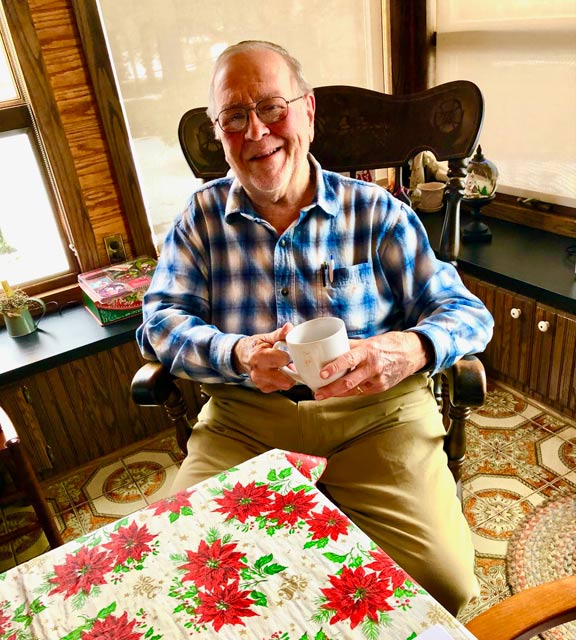
Air-Blast Injection Building Progress
By Paul Harvey
Last month I wrote The Benz Story and mentioned how it would fit into CPMís new project, the Air-Blast Injection building. We are certainly happy with its progress, and this article will explain why! This issue is intended to tie the project together for the reader, to better understand our excitement.
But first, what is air-blast injection? I haven't talked about that for quite a while, so its best that I explain. We will now time travel back to Augsburg, Germany, and visit Dr. Rudolph Diesel in 1893.

Dr. Rudolph Diesel
He had an idea and a dream. Being an impeccable engineer, he was skilled in mathematics. Although Nicholas Ottoís gas engine had been around since 1876, Diesel thought he could do Otto one better! He calculated that if compression was increased the resulting temperature in the cylinder would increase. Wow, inject the fuel at the correct time and no other means of ignition would be needed. He also wanted to inject the fuel over 20 degrees of crankshaft rotation, prolonging the amount of power. The Otto gas engine just had an instantaneous explosion to provide the power. Sounds great, but how to make it work?
Dr. Diesel was fortunate to align himself with Maschinenfabrik Augsburg which was already building a large array of equipment and had facilities for his engine construction and trials. He and his staff worked diligently from 1893 to 1897 to perfect the engine. There were many trials and failures in trying to develop a cylinder to withstand the needed 500 psi compression for ignition. Some prototypes actually exploded! Solving this problem, he was next faced with the problem of getting the fuel injected into the cylinder. Finally, he developed a plan to deliver the fuel to the injector under low pressure and then use air at 850 psi to blast it into the cylinder at the precise time. Success! He had developed Air-Blast Injection! His first successful engine of 1897 is proudly displayed in the MAN Museum in Augsburg.
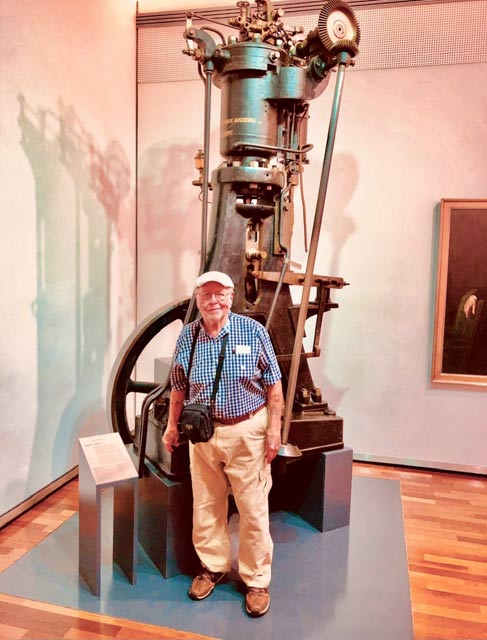
The author with Dr. Dieselís first successful engine from 1897 at
the MAN Museum in Augsburg, Germany
Dieselís engine was an instant success and Maschinenfabrik Augsburg met the demand and soon was building these magnificent machines in much larger sizes. The demand for them was great! CPMís Augsburg is 12 hp and built in 1903 as serial number 185.
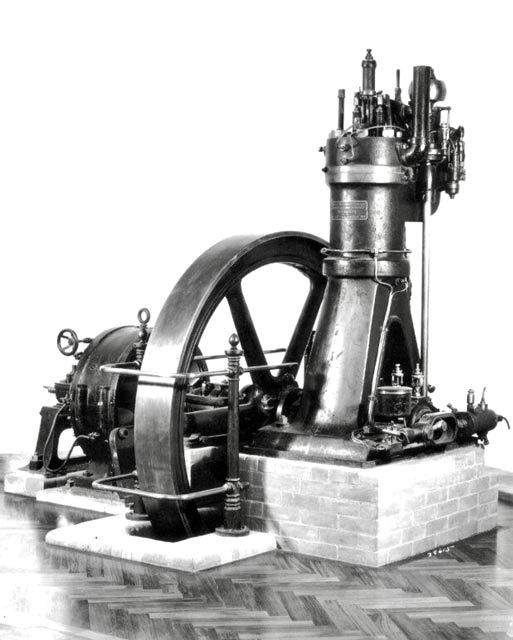
Augsburg Air-Blast Injection engine.
Now what about the exciting new building and the engines it will display? It will contain the Augsburg, the Graz, and the Benz. But more about them later. The good news is that the structure will appear as an early 1900s German powerhouse! Our friend Dr. Friedrich Busch provided an excellent photo of a 1904 German structure. We intend to duplicate it as much is possible, including the lighting and tile floor.
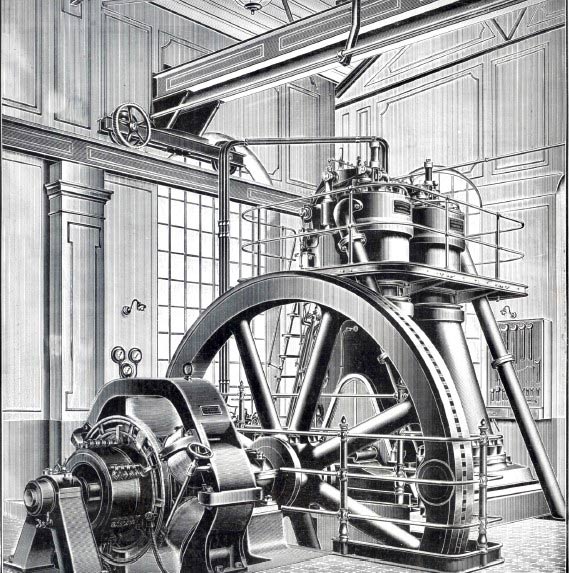
Engraving of a German powerhouse
Gordon Jones and I have been working closely with CBF Contracting of Sligo, Pennsylvania. CBF has provided extensive drawings. Construction will soon start with the Benz and Augsburg foundations as well as with the building footers.

The site has been cleared of five dead trees and lots of storage items. It is now ready for the contractor. Itís just north of the water tower and across the road from Patís Place. It will have excellent exposure!

ABI building site at Coolspring Power Museum.
Here are some of the drawings from the contractor.
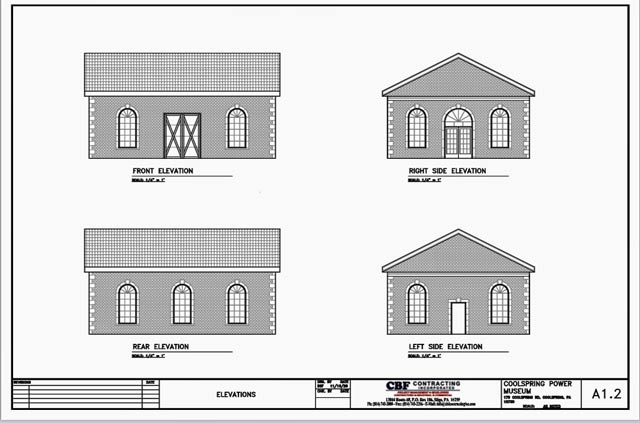
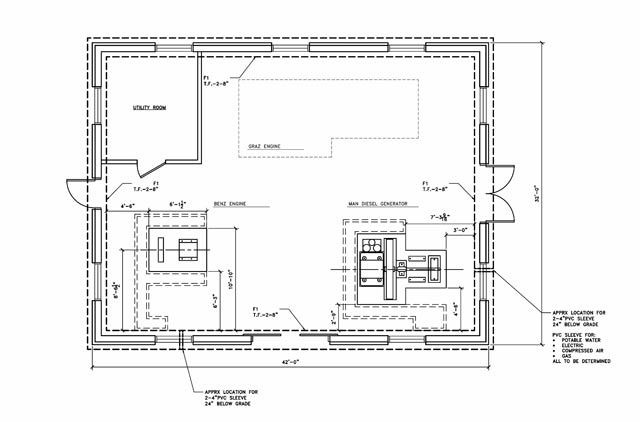
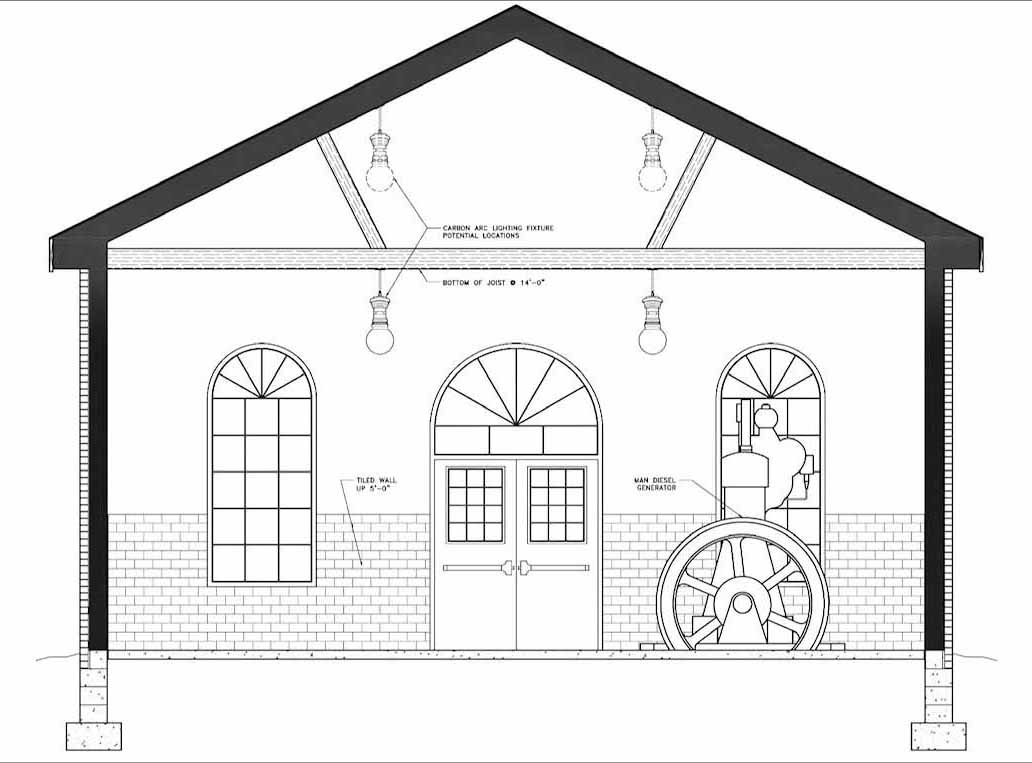
ABI building drawings.
The building will be 30 feet wide and 40 feet long in order to give an ample visitor area. It will have a red brick exterior with a reproduction tile roof, much like the original German powerhouses. The doors are wooden and swing out on massive iron hinges. There will be porch roofs over the south and east doors. The building will have excellent exposure to our guests as they walk up to it. The floor will be black and white tile around the engines, much like the original. The center will have the commemorative paver bricks in the floor. The walls will be tiled up to five feet, then stuccoed in white to the ceiling. The interior ceiling will be open trusses as shown below.
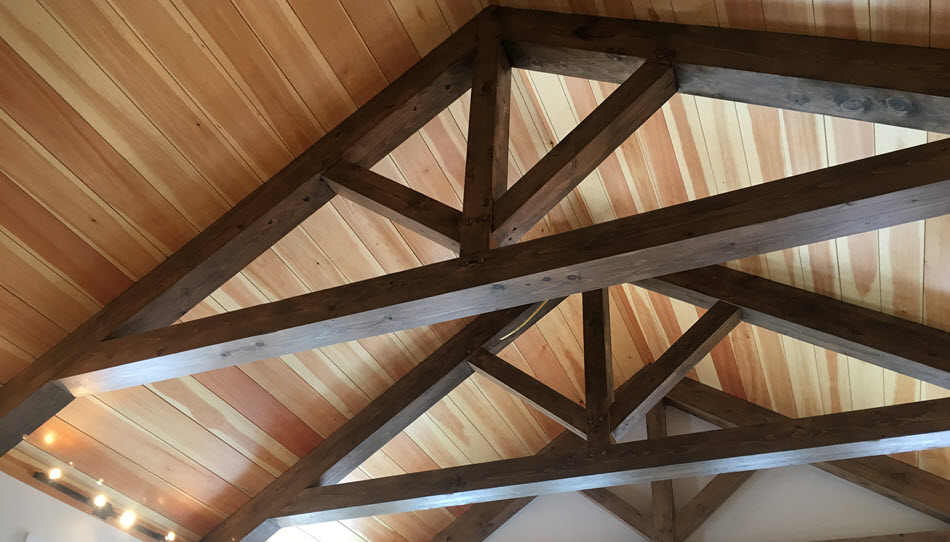
Roof truss concept.
Iím sure it will be a world-class display. There is no other place in the world that has such an installation. One can just step back 100+ years upon arriving and entering. What an experience!
We are doing fundraising in several ways. The commemorative bricks have been quite popular, available in many price ranges and inscribed as one wishes. Full ordering information can be found on the Augsburg Project page of our website, coolspringpowermuseum.org. For your convenience, we accept PayPal.
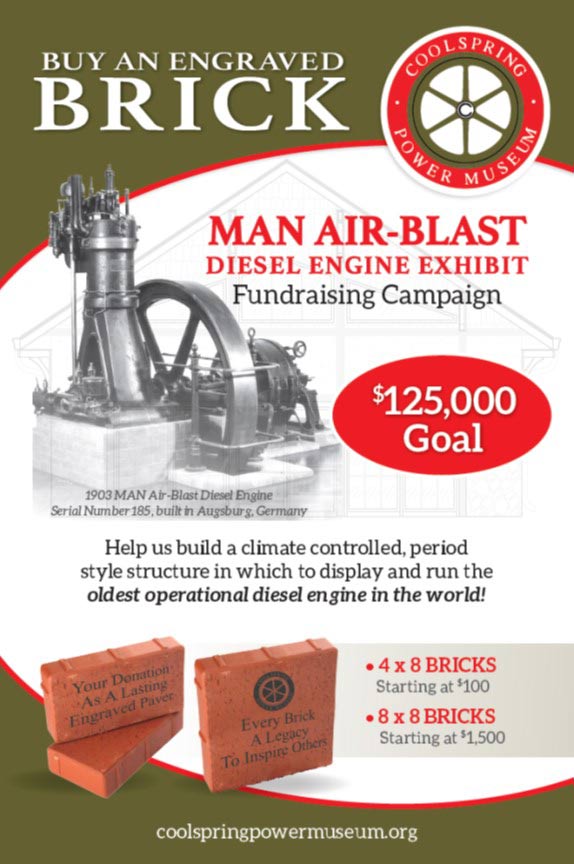
We are also developing an e-commerce site to sell items such as caps and mugs. Watch our website for further information. Here are our Augsburg mugs.
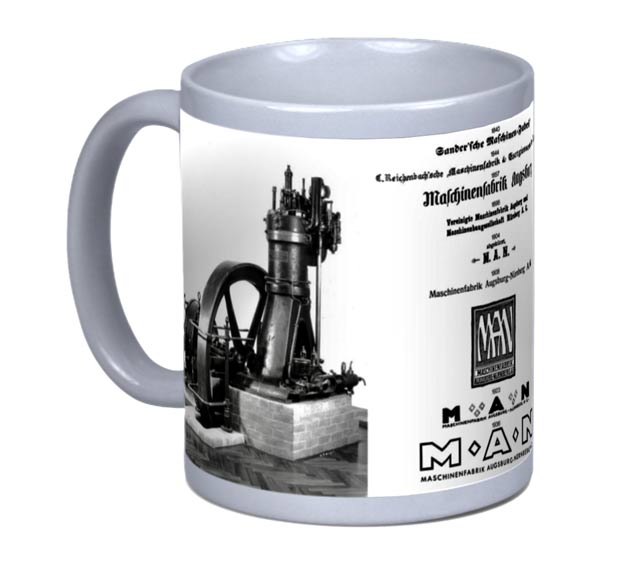
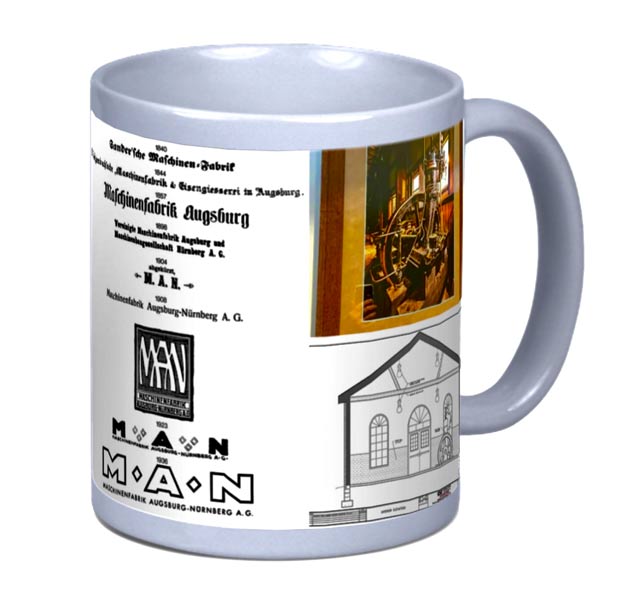
Of course, the first engine to be included is our Augsburg. Our engine was built in 1903, and Augsburg and Nuremberg did not merge to form MAN until 1908. When completed, it will be the oldest running Diesel in the world!

Nameplate for the museum's Augsburg engine and an ad for MAN.
It originally was bought by Siemens and Halske who fit it with a DC dynamo and sold it to the island of Helgoland to power a lift or elevator to transport tourists from the coast to the main part of the island. The lift can be seen in the following photo.

Helgoland and its coastline.
The second engine to be installed is the 1918 Benz. Admittedly, it is not air-blast injection but was built in Germany and represents 15+ years of Diesel engine evolution. The classic design allows it to blend well.
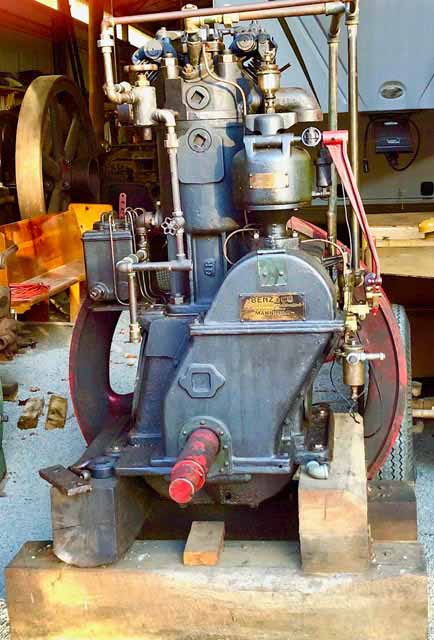
Benz engine at CPM, Fall 2020
It was imported by the Buckeye Pipe Line Company of Ohio and used in their Parent Station to pump crude oil. Being 12 hp and of traditional German design, it should compliment the display.

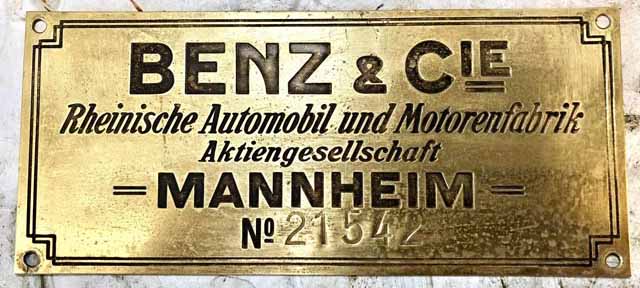

Benz ad, nameplate, and dealer's plate.
The third and final engine will be the Graz that is being acquired from Dr. Friedrich Busch of Hof, Germany. All was ready to import it last year but then Covid struck! I had planned to return to Germany with several other friends to learn its operation then help dismantle and pack for the voyage to CPM. Perhaps this year will see it happen! The photo shows it happily installed in Friedrichís shop.
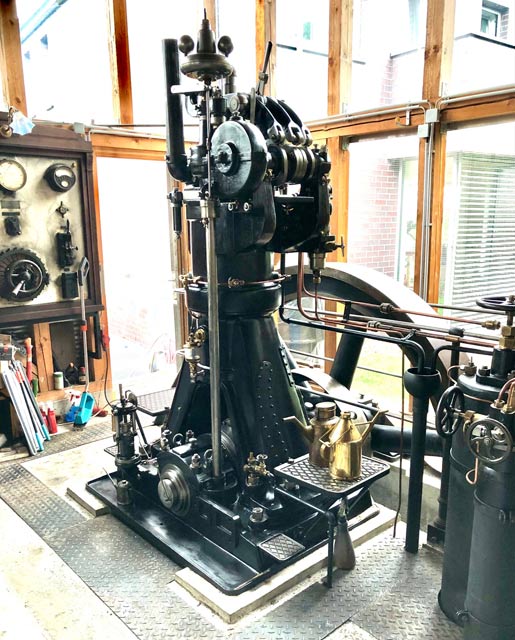
Graz engine in its current location.
The engine was built by Grazer Waggon & Maschinen Fabrik of Graz, Austria. It is also 12 hp, as all three are, and built under Augsburg license in 1904 as serial number 19. It will be a great addition to have two significant air-blast injection Diesels in the same building.

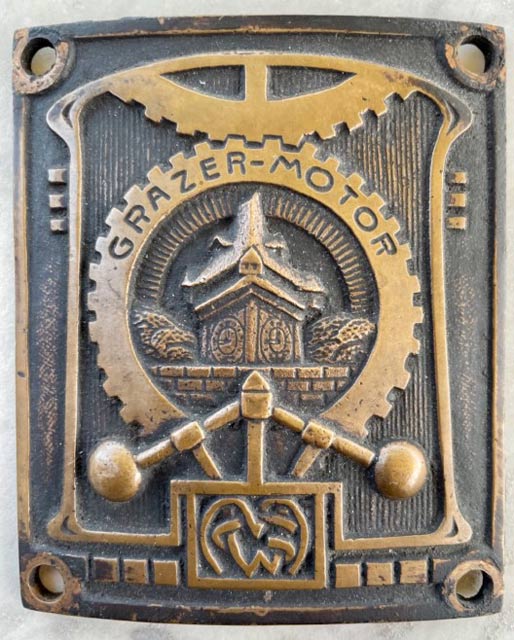
Graz nameplate and logo plate.
I certainly hope you have enjoyed this little tour of our exciting new building and the equipment it will contain. It is an ambitious project, but the results will be rewarding! Please consider helping us any way you can.
And now back to my rocking chair!